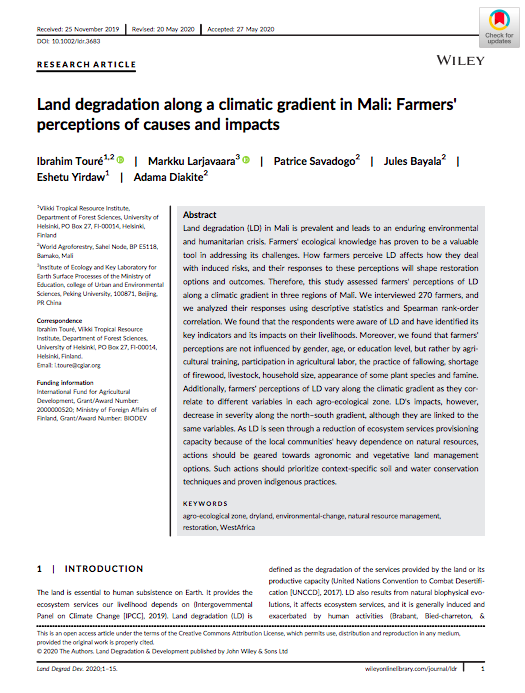Land degradation along a climatic gradient in Mali: Farmers’ perceptions of causes and impacts

ABSTRACT
Land degradation (LD) in Mali is prevalent and leads to an enduring environmental and humanitarian crisis. Farmers’ ecological knowledge has proven to be a valuable tool in addressing its challenges. How farmers perceive LD affects how they deal with induced risks, and their responses to these perceptions will shape restoration options an1d outcomes. Therefore, this study assessed farmers’ perceptions of LD along a climatic gradient in three regions of Mali. We interviewed 270 farmers, and we analyzed their responses using descriptive statistics and Spearman rank‐order correlation. We found that the respondents were aware of LD and have identified its key indicators and its impacts on their livelihoods. Moreover, we found that farmers’ perceptions are not influenced by gender, age, or education level, but rather by agricultural training, participation in agricultural labor, the practice of fallowing, shortage of firewood, livestock, household size, appearance of some plant species and famine. Additionally, farmers’ perceptions of LD vary along the climatic gradient as they correlate to different variables in each agro‐ecological zone. LD’s impacts, however, decrease in severity along the north–south gradient, although they are linked to the same variables. As LD is seen through a reduction of ecosystem services provisioning capacity because of the local communities’ heavy dependence on natural resources, actions should be geared towards agronomic and vegetative land management options. Such actions should prioritize context‐specific soil and water conservation techniques and proven indigenous practices.